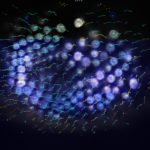Link to Pubmed [PMID] – 22341230
Link to DOI – 10.1016/B978-0-12-391856-7.00039-1
Methods Enzymol 2012 ; 506(): 291-309
Fluorescence-based imaging regimes require exposure of living samples under study to high intensities of focused incident illumination. An often underestimated, overlooked, or simply ignored fact in the design of any experimental imaging protocol is that exposure of the specimen to these excitation light sources must itself always be considered a potential source of phototoxicity. This can be problematic, not just in terms of cell viability, but much more worrisome in its more subtle manifestation where phototoxicity causes anomalous behaviors that risk to be interpreted as significant, whereas they are mere artifacts. This is especially true in the case of microbial pathogenesis, where host-pathogen interactions can prove especially fragile to light exposure in a manner that can obscure the very processes we are trying to observe. For these reasons, it is important to be able to bring the parameter of phototoxicity into the equation that brings us to choose one fluorescent imaging modality, or setup, over another. Further, we need to be able to assess the risk that phototoxicity may occur during any specific imaging experiment. To achieve this, we describe here a methodological approach that allows meaningful measurement, and therefore relative comparison of phototoxicity, in most any variety of different imaging microscopes. In short, we propose a quantitative approach that uses microorganisms themselves to reveal the range over which any given fluorescent imaging microscope will yield valid results, providing a metrology of phototoxic damage, distinct from photobleaching, where a clear threshold for phototoxicity is identified. Our method is widely applicable and we show that it can be adapted to other paradigms, including mammalian cell models.




